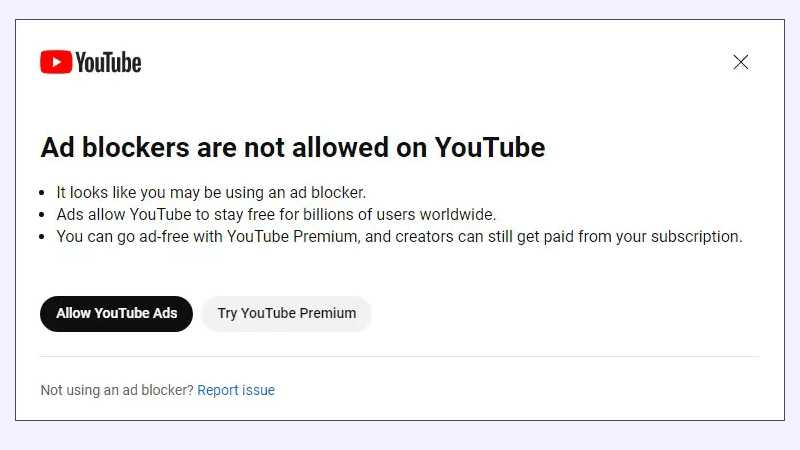In recent weeks, YouTube has dramatically escalated its efforts to block ad blocking by users, with the platform now requiring viewers to disable ad blockers or subscribe to YouTube Premium in order to watch videos.
According to YouTube spokesperson Christopher Lawton, who spoke with The Verge, YouTube has “launched a global effort” to combat ad blocking, which it says violates its Terms of Service.
When ad blockers are detected, users see a pop-up stating “video playback is blocked unless YouTube is allow-listed or the ad blocker is disabled.”

Unlike previous smaller tests, this is a global rollout to all YouTube’s userbase, and the platform will prevent watching videos until the user takes action, either by allow-listing or subscribing to Premium.
This, the inability to watch videos, can happen at any time, although most users facing the “black screen” say that it happened to them after the notice was shown three times. Reddit users have complained about encountering the pop-up notifications in various formats, indicating YouTube is adamantly pursuing the new enforcement worldwide.
Critics view YouTube’s latest move as overly aggressive and likely to annoy many users who installed ad blockers to avoid disruptive advertising. However, with new privacy laws like the EU’s Digital Services Act requiring opt-out options for data usage in ads, platforms like YouTube have added motivation to push users towards paid ad-free subscriptions instead of allowing blocking of its main revenue source.
Other platforms could follow YouTube’s lead
YouTube has explored ways to maximize ad revenue as growth stalls1, including unskippable 30-second ads, longer ad breaks, and a $2 price hike for YouTube Premium. Users unwilling to disable ad blockers or pay for Premium now face limited options. Workarounds like using ad blockers on certain browsers still work for some, but YouTube is committed to closing loopholes.
The crackdown reflects YouTube’s dominance as the top video site, leaving it little incentive to compromise. Users must either tolerate increasingly obtrusive ads, pay up for Premium or abandon YouTube entirely.
It remains to be seen whether other major platforms will follow YouTube’s lead in technically enforcing its Terms against ad blockers. For now, YouTube appears committed to squeezing more value out of ads and further integrating Premium as the only way to have an interruption-free viewing experience.
The strategy may work to boost revenues, but runs the risk of alienating users who expect more control over their viewing experience.
- The numbers from Q2 2023 might say otherwise, but there are now a lot of short-form video platforms that are making a dent in YouTube’s growth. ↩︎
